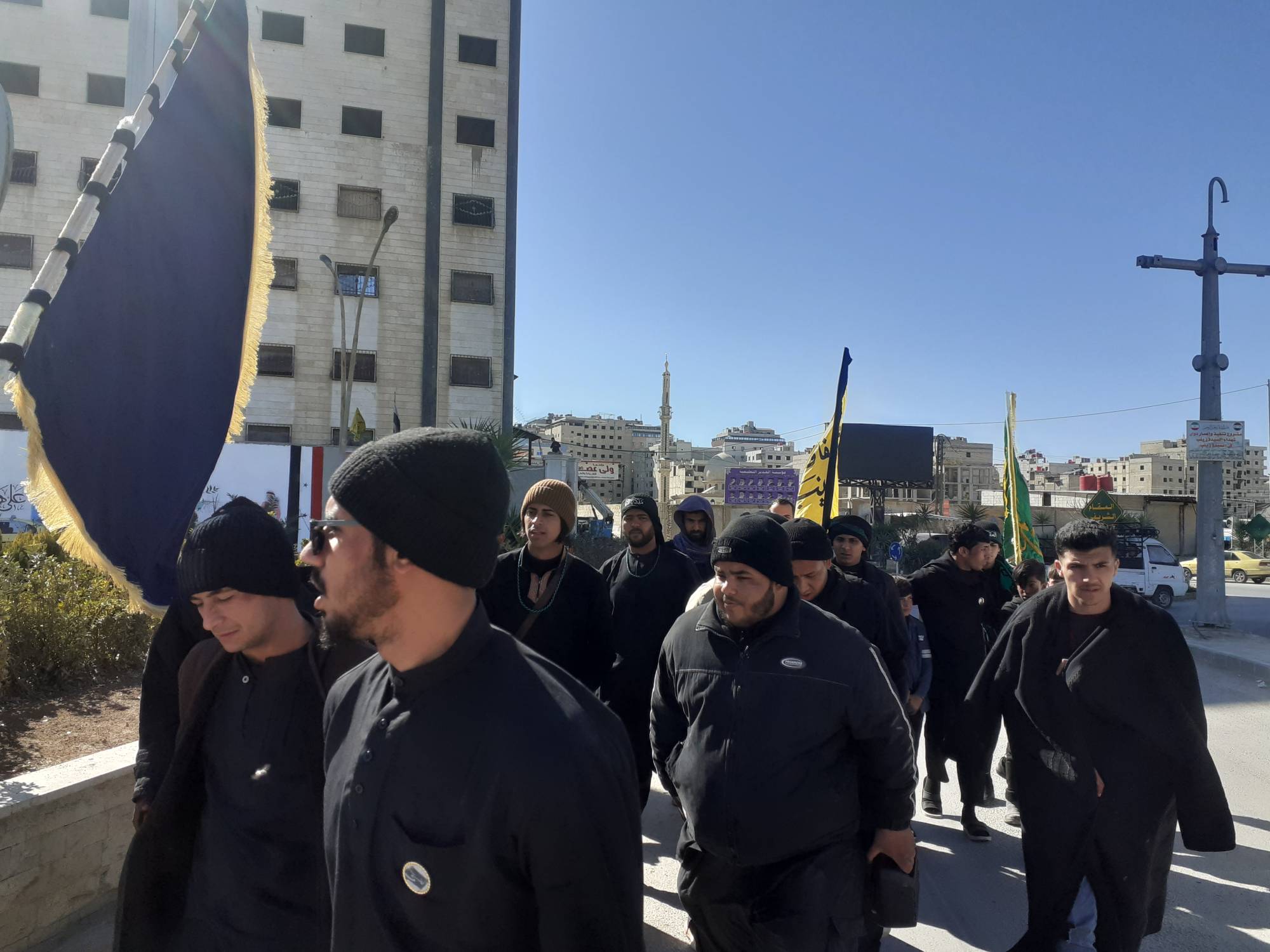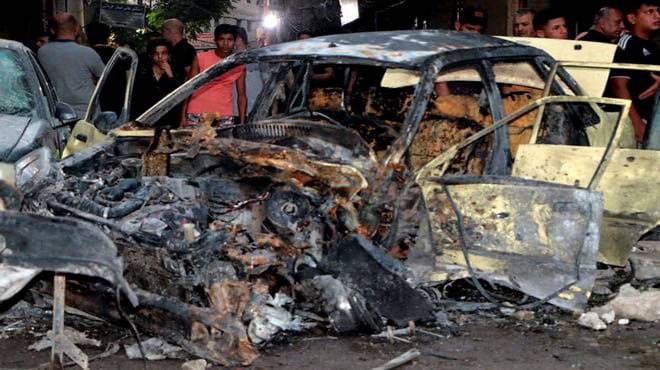Iran establishes security, economic and demographic influence in Sayyida Zeinab
Iran continues to consolidate and strengthen its influence at all levels in the Sayyida Zeinab area in the southern Damascus countryside. What suggests that it is an “Iranian region” and not a Syrian city, and with the Syrian Minister of Tourism, Muhammad Rami Martini, and the Governor of the Damascus Countryside, Safwan Abu Saadi, recently making a “rare visit” to it, observers saw that it carries two messages, the first: “sovereign” directed from Damascus. To Tehran, “Sayyeda Zeinab” is a Syrian region like the rest of the country’s regions, and the other, through which the Syrian government wants to suggest that it controls the region.

“Al-Sayyeda Zeinab” area; Located about 8 kilometers southeast of the capital, Damascus, it is the main stronghold of the Iranian militias and the militias loyal to them in the southern Damascus countryside, which Tehran has formed since the outbreak of the Syrian crisis in 2011. Iran has taken the issue of “defending the shrine of Sayyida Zeinab,” which is visited by thousands of Shiite visitors. From Iran, Iraq, Lebanon, Afghanistan and Pakistan, it was an excuse to attract militants from all over the world to Syria, until the number of militias now exceeded 50 factions, and the number of their militants exceeded tens of thousands working under the command of Iranian military experts.
Entrance to Sayyida Zeinab is exclusively through two main roads: the first is “Mustaqbal Junction” on the eastern side of the Damascus International Airport road, and the other is from inside Damascus, starting from the Al-Qazzaz neighborhood on the southern highway, then the town of Babila, then the town of Hajira, all the way to “Ms. zainb”.
Armed appearances
After entering from “Al-Mustaqbal Junction” for a distance of four kilometers, guarded by three security barriers, two shared between “Hezbollah” and the “Fourth Division” of the Syrian army, and one for the party, the visitor arrives at the eastern entrance to “Al-Sayyida Zeinab.” As soon as he passes through the entrance to the “Al-Rawda District,” he notices the intensity of the construction activity of huge multi-storey buildings with large areas, along with the restoration of other similar buildings in the “Al-Rawda District.” The method of their construction suggests that they will be hotels in addition to several hotels built recently and others that are old.

As you go west into the “Rawda area” by about 50 metres, you begin the “Bahman” commercial market, which is one of the largest and most important markets in “Al-Sayyida Zeinab.” It is noticeable that a few meters before entering it, one feels as if he is outside Syrian territory and there is no longer anything linking him to the country. There is a checkpoint over which members of Hezbollah are deployed, and there is a density of banners and pictures throughout the market calling for the revival of Shiite religious events, with the spread of offices organizing trips for Shiite “visitors” that hang promotional banners, while Iranian and sectarian designations dominate most hotels and shops. With all its specialties.

While the beginning of the market witnessed the construction of huge high-rise buildings and the restoration of others, hotels and other destinations were making preparations to commemorate the “Forty of Sayyida Zeinab” occasion by using large cooking pots and placing them in front of the hotels.
With the crowded state of the market, and the heavy deployment of security personnel, some of whom are believed to be from Hezbollah while others are from the Syrian security services, it is noted that the majority of passers-by are “visitors” intending to say “Sayyida Zainab” shrine, and it is clear from their conversations that most of them are Iraqis.

While attention is drawn to the lack of Lebanese “visitors” and the scarcity of Iranians, Pakistanis, and Afghans, sources in the market suggest to us regarding the Lebanese “that the Shiites in southern Lebanon are preoccupied with displacement and its high material costs due to the war in the Gaza Strip, while the Iranians may have concerns about what sites and headquarters are being exposed to.” Iranian and Hezbollah militias in the areas surrounding Damascus International Airport, specifically Sayyida Zeinab, from Israeli raids.

About 30 meters before the end of the market, there is a checkpoint with members of Hezbollah and Syrian security deployed. After passing it, the features of the shrine of Sayyida Zeinab appear. It was surrounded by security barriers, most of which were deployed with members of Hezbollah, and by a wall of large cement blocks on which banners in Arabic and Persian were densely plastered, as well as pictures of symbols of Iranian militias and groups affiliated with them who were killed during the war in Syria. While surveillance cameras and many of the flags raised by Iranian followers on their special occasions were installed on top of the fence.
While the crowding intensifies at the eastern gates of the shrine, Hezbollah security personnel are carrying out very tight security measures at the entrance designated for women and the other designated for men.
It is noted that a large number of large residential buildings surrounding the shrine have been converted into hotels bearing Iranian names, after being subjected to large and very expensive restoration operations.
Change street names
In 2020, Iran previously worked to change the names of main streets in Sayyida Zeinab from ancient names inspired by geographical regions or Syrian national symbols, to names inspired by sectarian symbols. For example, the name “Hajira Roundabout,” which was called that way decades ago in reference to the town of “Hajira,” adjacent to “Al-Sayyeda Zeinab” from the northern side, was changed to “Al-Sayyeda Zeinab Roundabout.”
In terms of government services in Sayyida Zeinab, which Iranian officials have long complained about their lack and called for improving them and increasing attention to them, the scenery of its roads, except for the entrance to the “Rawda area,” indicates that they need to be repaved. This is because potholes are widespread in most of them, while the public complains about the frequent malfunctions in the water network, as well as the poor sewage network.
While government electricity is rarely available throughout the region and is limited to half an hour on and 6-8 hours off, according to the statements of many residents, local sources confirm that the majority of Iranian militia families and others loyal to Tehran have solar energy systems or electric generators, and obtain fuel. Among the Iranian institutions operating in the region, including the “Jihad Al-Binaa Foundation.”

Despite the passage of years since the Syrian army, Iran and its militias regained control of the region from the armed opposition factions, the cessation of combat operations in Damascus and its environs, and the disappearance of the scene of the public deployment in military uniform of Tehran militia members and their affiliated armed groups there.
Syrian sources in the “Al-Rawda area,” whose farms were targeted several times by Israeli raids, during which Radhi Mousavi, the commander of the liaison force of the “Iranian Revolutionary Guard” in Syria, was killed, as well as in the area surrounding the shrine, confirm to us that these people did not leave “Sayyida Zeinab.”
The sources say in their answer to a question: If Iran and its militias reduced their presence in Sayyida Zeinab due to the intensity of the Israeli bombing targeting their positions and headquarters in the region? “no. They just disappear from sight…but they exist.”

The sources pointed out that there is great dissatisfaction among the people of the region over the continued presence of those who “swallowed everything and dominated everything.” She says: “Security-wise, Hezbollah dominates the region. Economically, Iran and its militias have bought many shops. The homes, hotels, real estate, and lands they bought are countless, taking advantage of the poverty of the people. Most of the huge buildings currently being constructed are behind them and will be hotels and apartments for them. Even human (demographically) have dominance; They have become a majority and the indigenous population of the region has become a minority!”
Real estate acquisition
The sources believe that there are no indications that Iran and its militias have any intention of leaving Sayyida Zeinab. “They are seeking to buy more houses and shops and build huge buildings and hotels,” while commercial sources in the “Bahman” market reveal that the annual rent of a shop in the market reaches 150 million Syrian pounds (the US dollar is currently equal to about 14,500 Syrian pounds), while the The number of shops in “Al-Sayyeda Zeinab” is more than 500.

According to an economic expert who previously spoke to Asharq Al-Awsat, “During the past four years, Iran has controlled the real estate market through networks of institutions, real estate dealers, and Iranian banks linked to the Revolutionary Guard, and has provided facilities and granted large loans to those wishing to buy real estate in Syria.” Iranians, contractors, businessmen, and militia members own thousands of homes and real estate in the most vital areas. Whether in old Damascus; The neighborhoods of Amara and Joura and the Christian neighborhood of Bab Touma. In the commercial center, where the Iranian embassy acquired the (Kalda), (Iwan), (Asia), (Damascus International), (Venice), and (Petra) hotels, shares in the (Semiramis) Hotel, and large areas behind… Al-Razi Hospital to establish residential towers, in addition to owning lands and real estate in the Damascus countryside.
In light of Iran’s continued consolidation and strengthening of its presence and influence economically, securely and demographically in Sayyida Zeinab, the Syrian Minister of Tourism and the Governor of the Damascus Countryside visited the region on February 27 and inspected the tourism and service situation there, according to what the ministry’s Facebook page reported.
During the visit, Martini considered that “Lady Zeinab” is gaining great fame at the global level, and she is a major religious, tourist and cultural symbol and a center of attraction not only for tourism but also an economic and service center in addition to her cultural and humanitarian status at the local and international levels. He added: “What he touched during the tour In the city, this is a reason to be pleased, as the city has witnessed a remarkable development in terms of infrastructure and in terms of tourist facilities, especially in the field of hospitality and hotels, which number more than 100 hotels, all of which provide services and hospitality according to standards applied locally and internationally.”
The Minister thanked what he called “national investors” who were able to build and develop tourist facilities despite the conditions of war and economic blockade, expressing his confidence in achieving a qualitative leap at the tourism level.
Follow-up sources in Damascus described the minister and governor’s visit to “Sayyeda Zeinab” as “surprising” and “remarkable.” Because it is “rare” that Syrian officials make visits to that region in light of the situation that has existed there since the outbreak of war in the country. After the sources made it clear that the situation in Sayyida Zainab is no longer a secret to anyone in light of the information and technology revolution, I considered that the Syrian government wanted, through this visit, to send two messages to Tehran: The first is a “sovereign” message stating that Sayyida Zainab is a Syrian region like the rest of the regions. Which the government controls and imposes its sovereignty over.”
The other message is that, according to the sources, Damascus wants through the visit to “suggest that it controls the region,” especially in light of the Arab openness to Damascus and the sensitivity among Arab countries to Iranian interference in the affairs of Arab countries.
But other follow-up sources saw that “these people did not come to Syria in order to leave, as they have plans that they came to implement and it is not believed that they will leave easily.”
ظهرت في الأصل على aawsat.com

